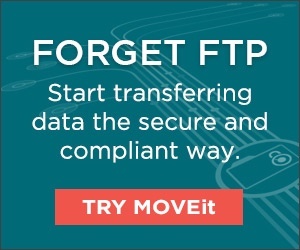IT keeps schooling you about the dangers of Dropbox, Google Drive, OneDrive, and other online file-sharing services. But you still need to collaborate with your colleagues as well as your customers and business partners. There are numerous reasons why IT should be worried about online file-sharing services. Just to name a few of the top contenders:
- Customers might find out something about your company that they’re not supposed to know.
- Sensitive data could find its way into the hands of a competitor.
- You might cause your company to face fines for violating privacy compliance regulations.
Sharing Word, Excel, PowerPoint and PDF documents makes it easier to communicate and track revisions. Working together helps close deals and complete projects faster. So what’s the answer to this challenge? What tool will allow you to get your job done but also protect sensitive documents?
Understand the Risks
Perhaps the first step is to understand the risks of using online file-sharing services. While these tools are sufficient for sending personal files, they aren’t capable of securely managing corporate file transfers. Dropbox, Google Drive and OneDrive have limited encryption and security features, which leaves data exposed and at-risk of becoming corrupted or landing in the wrong hands.
The security measures of these services also take a certain amount of know-how to set up correctly, and if you’re in a rush to set up a new instance of an online sharing service, it’s easy to overlook all the necessary steps. Just think of how easy it is to leave social media accounts wide open!
Many compliance regulations dictate that certain files have limited access or remain encrypted during transfer. Because typical file-sharing services are not equipped with secure file regulation capabilities, there is an increased risk that you are violating your company’s compliance requirements—whether it’s HIPAA, PCI DSS, FINRA, SOX, GDPR or another regulation.
When you use a file-sharing service, you are on your own as far as security is concerned. Without the necessary security measures, any data stored online can potentially be accessed and retrieved by hackers.
Your IT team can’t track your activity and file uploads, and they can’t block external users from accessing the files you post. IT also can’t track when files are modified and determine who has viewed a file—which are both key requirements of compliance regulations that pertain to protecting sensitive information. And if your device is stolen or lost, IT can’t remotely wipe what’s stored on the file-sharing service.
Because IT can’t monitor what files are synced to what device, it’s also impossible to know whether data has been shared with or accessed by the wrong party, which increases risk of insider threats and data theft. This is important to realize because many file-sharing services have lost customer files or failed to back them up—meaning you run the risk of permanently losing company files with no way for the IT department to recover them.
Work with IT to Solve the Challenge
Whereas end users and IT teams have traditionally battled over the use of online file-sharing services, the answer to this dilemma lies in the two sides coming together to jointly solve the problem. To work efficiently with your colleagues, customers and partners, you need reliable, user-friendly file transfer options. IT can meet this need by providing a highly-secure alternative to online file sharing services, such as Managed File Transfer (MFT).
 The leading managed file transfer solutions are easy to use. From the IT perspective, they consolidate all file transfer activities across the company into to one system to enable better management control and visibility over core business processes. MFT solutions
also provide centralized access controls, file encryption and activity tracking to ensure operational compliance with internal governance and regulatory requirements.
The leading managed file transfer solutions are easy to use. From the IT perspective, they consolidate all file transfer activities across the company into to one system to enable better management control and visibility over core business processes. MFT solutions
also provide centralized access controls, file encryption and activity tracking to ensure operational compliance with internal governance and regulatory requirements.
IT will appreciate that they can preconfigure workflow automation capabilities without scripting. This allows an MFT solution to function a lot like Dropbox, Google Drive and OneDrive site, which accelerates the rollout of new projects and the onboarding of end users. MFT solutions also provide secure file transfers among end users, customers and partners with guaranteed document delivery and validity checks that make sure end users tapping into the system are properly authorized to send and receive documents.
Another factor that will impress IT is that today’s managed file transfer solutions have evolved beyond traditional file transfer solutions. This includes important security features additions such as the Secure File Transfer Protocol (SFTP), which adds secure shell (SSH) capabilities and secure sockets layer (SSL) technology.
While these terms may not resonate with end users, IT will certainly understand their importance. For example, SFTP provides file encryption to prevent data loss if files are intercepted in during upload and download processes. With these security capabilities, MFT technology provides full compliance measures for regulations such as PCI DSS, HIPAA, SOX, FINRA and GDPR.
The Safe Alternative
Online file-sharing services such as Dropbox, Google One and OneDrive put your company’s sensitive data at risk. Using these services may create serious problems for your company, and they may even jeopardize your job.
As an alternative, consider a Managed File Transfer solution such as MOVEit from Ipswitch. It’s easy for IT to set up and for employees to use when collaborating with each other, customers and partners.
MOVEit is used by thousands of organizations around the world to provide complete visibility and control over file transfer activities. You can also assure the reliability of core business processes and the secure and compliant transfer of sensitive data. It’s the way to go to protect your company and your career!


